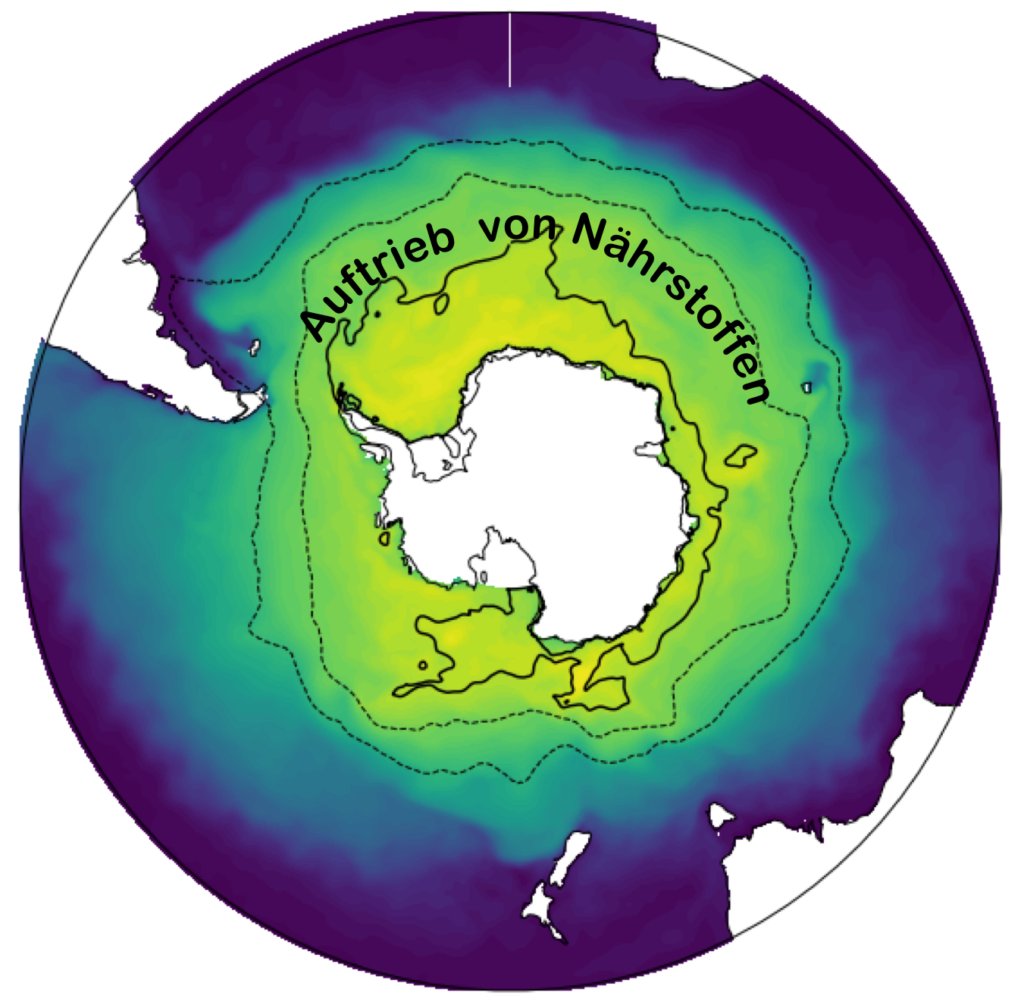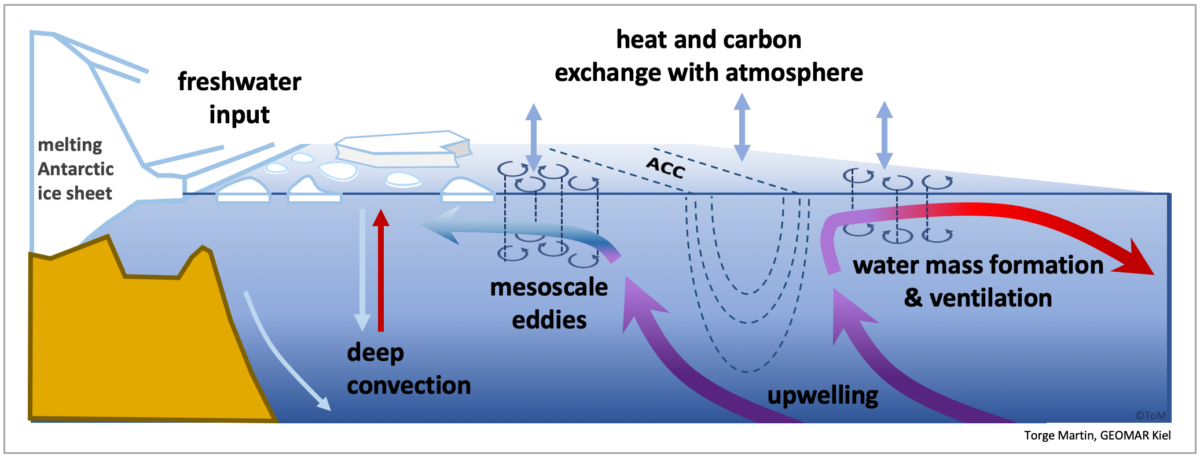The Southern Ocean is a key region of heat and carbon uptake and storage and thus contributes significantly to mitigating anthropogenic climate change. In this region, the interaction of wind, ocean circulation and sea ice, modulated by mesoscale eddies (with diameters around 10 – 100 km), regulate the vigorous exchange of heat and carbon with the atmosphere. Southern Ocean circulation and ocean-atmospheric fluxes vary over time due to internal, natural variability, but there is a long-term change as well due to global warming. Projections of continued global warming show dramatic changes to occur already this century: stronger westerly winds, enhanced melting of the Antarctic ice sheet, and physical as well as biogeochemical processes in the ocean will be out of balance.
At GEOMAR, we analyze the effects of climate variability and long-term change on the Southern Ocean system, from the Antarctic continent to the mid latitudes, from the ice sheet to the upwelling and ventilation regions, where major heat and carbon exchange between the ocean and atmosphere take place (see figure above). A hierarchy of regional to global biogeochemistry and climate models enables us to understand and estimate past and future implications of climate change on the Southern Ocean and to evaluate the role and importance of individual processes. These are, among others, mesoscale eddies, ventilation and deep water formation, and physical drivers of carbon and nutrient distributions in the ocean.
Objectives
- Carbon and heat uptake in the upwelling regions and storage thereof
- Redistribution of nutrients, and light and temperature, and their impact on plankton
- Role of mesoscale eddies (10-100 km) in the Southern Ocean
- Effect of Antarctic meltwater and iceberg discharge as well as other factors of global warming on watermass transformation and dynamics of the Southern Ocean
Methods
- global ocean model NEMO with integrated regional “nests” of finer spatial resolution for simulating explicitly mesoscale eddies and realistic dynamics
- global climate model FOCI for simulating the interaction of ocean, atmosphere and sea ice
- biogeochemistry model component MOPS for the simulation of the ecosystem and nutrient cycling in the ocean as well as the carbon exchange with the atmosphere
- B-SOSE reanalysis of the Southern Ocean for marine biogeochemistry
- other available global climate model simulations (CMIP)
Projects we participate in
PalMod2
We participate in the BMBF project “PalMod – From the last interglacial to the anthropocene: simulating an entire glacial cycle” by investigating key processes and interaction across scales in the ocean around Greenland and the Antarctic. Our focus is on the consequences and redistribution of enhanced meltwater input to the ocean by enhanced ice-sheet mass loss. Mesoscale dynamics are an important ingredient in this and thus we run high-resolution, eddying climate model simulations. The additional meltwater leads to regional cooling, sea-level rise and alters the global ocean circulation.
Contact:
Torge Martin, GEOMAR FB1-OD
Mathias Zeller, GEOMAR FB1-OD
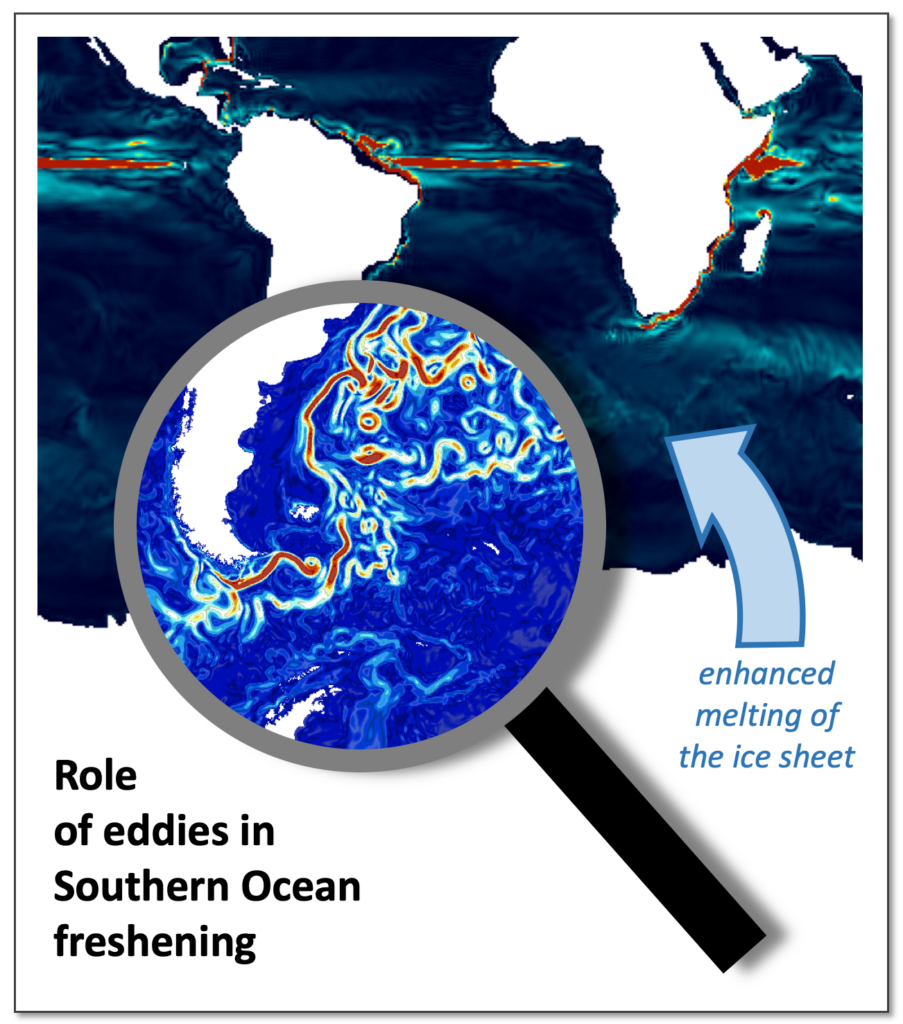
DFG project
The Southern Ocean, currently the largest oceanic sink of anthropogenic CO2, will play an important role in modulating the pace of climate change in the 21st century. There is intense debate regarding the response of the Southern Ocean carbon sink to projected changes in Southern Hemisphere winds and temperatures. In this project, the physical drivers of the Southern Ocean carbon sink over the next decades are assessed. To this end, a set of simulations with an eddy-rich ocean biogeochemistry model (as seen in the figure) are being integrated under global warming conditions. The aim is to disentangle the role of different physical factors, such as mesoscale eddies, wind stress changes, rising surface temperatures, and Antarctic melting, on the future CO2 uptake.
Contact:
Lavinia Patara, GEOMAR FB1-OD
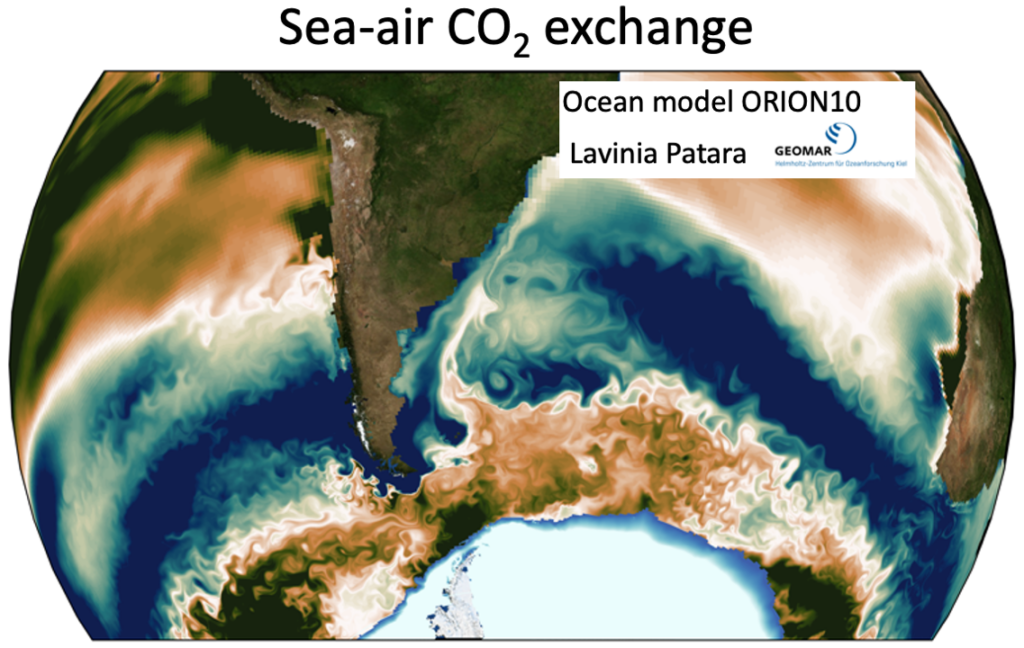
SO-CHIC
With our modelling, we contribute to the project SO-CHIC, funded by the European Union’s Horizon 2020 research and innovation programme. This project aims to cast further light on the impact on climate of Southern Ocean processes involved in ocean heat and carbon uptake, storage, and transports. At GEOMAR, we specifically focus on the Weddell Sea. In the climate models, we study characteristics of its circulation, water masses, and sea ice distribution, and how those may change in the future. With atmospheric models, we also study how changes in Weddell Sea sea ice may affect dynamics in the atmosphere.
Contact:
Malin Ödalen, GEOMAR FB1-ME
Joakim Kjellsson, GEOMAR FB1-ME
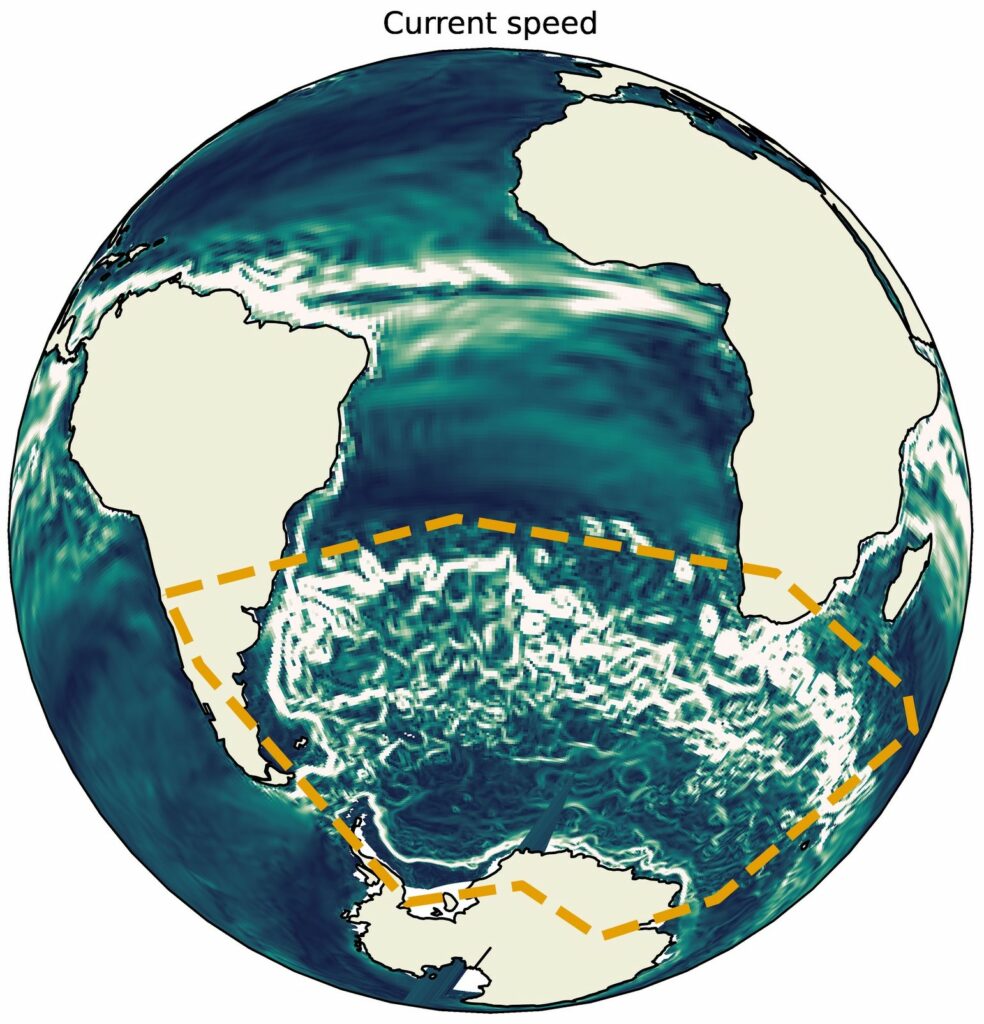
Reshuffling of nutrients, and plankton under climate change
The Southern Ocean is a region where water upwells from the deep ocean. The deep water is enriched with nutrients that feed the growth of tiny plants (phytoplankton) floating in the sunlit surface ocean. How the nutrients in the Southern Ocean are redistributed from the deep to the surface ocean, and exported northward to other ocean regions, is investigated using a biogeochemical ocean circulation model that systematically incorporates observational data (B-SOSE).
We are also investigating how phytoplankton are predicted to change under climate change in the Southern Ocean, and what are the driving causes. For this purpose, we use results from global climate models (CMIP6). We analyze sensitivities of plankton to current temporal variability, such as in the seasonal cycle, due to vertical mixing, light, nutrients, and temperature, and use knowledge of these sensitivities to better assess future changes in phytoplankton under climate change.
Contact:
Ivy Frenger, GEOMAR FB2-BM
Tianfei Xue, GEOMAR FB2-BM
